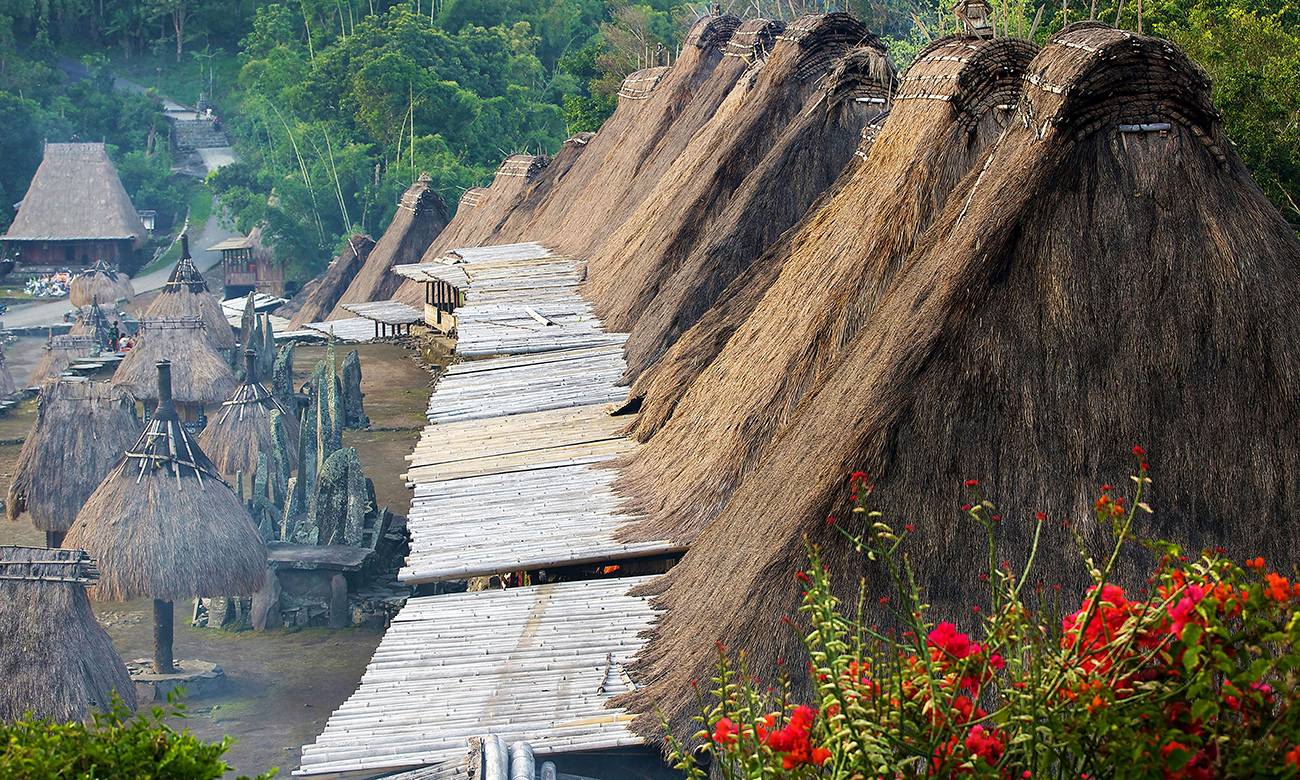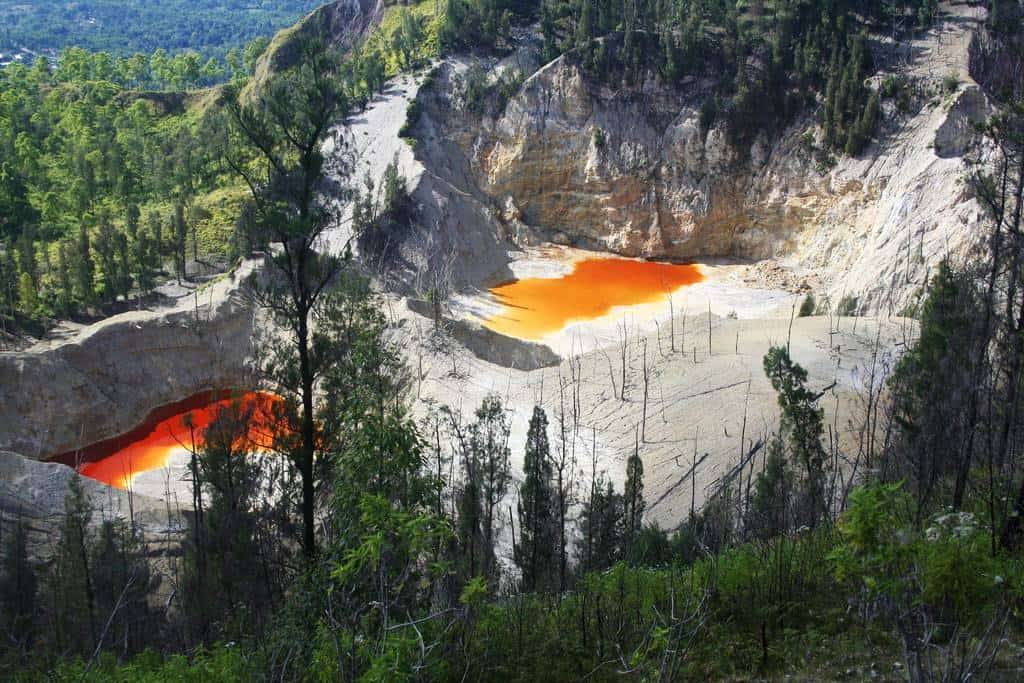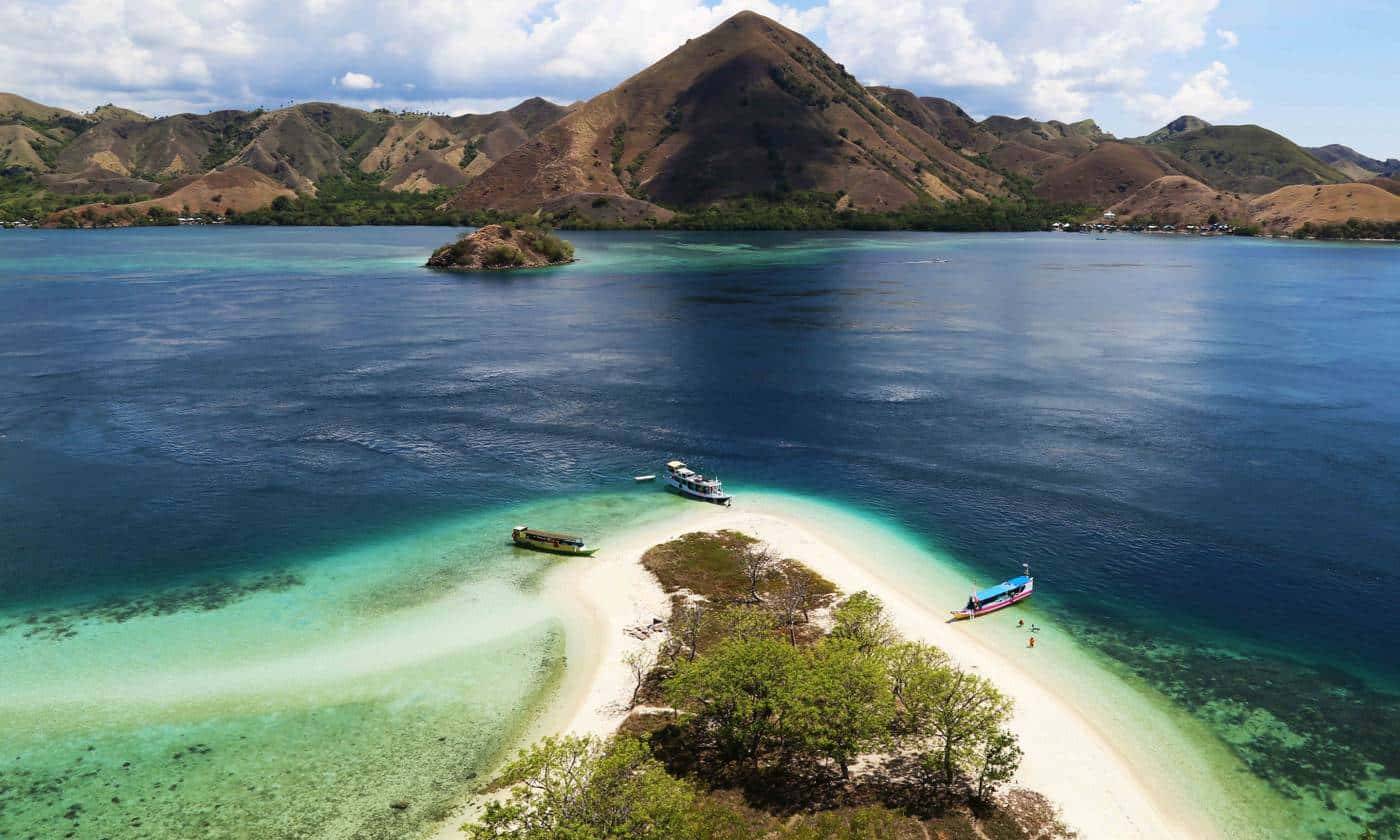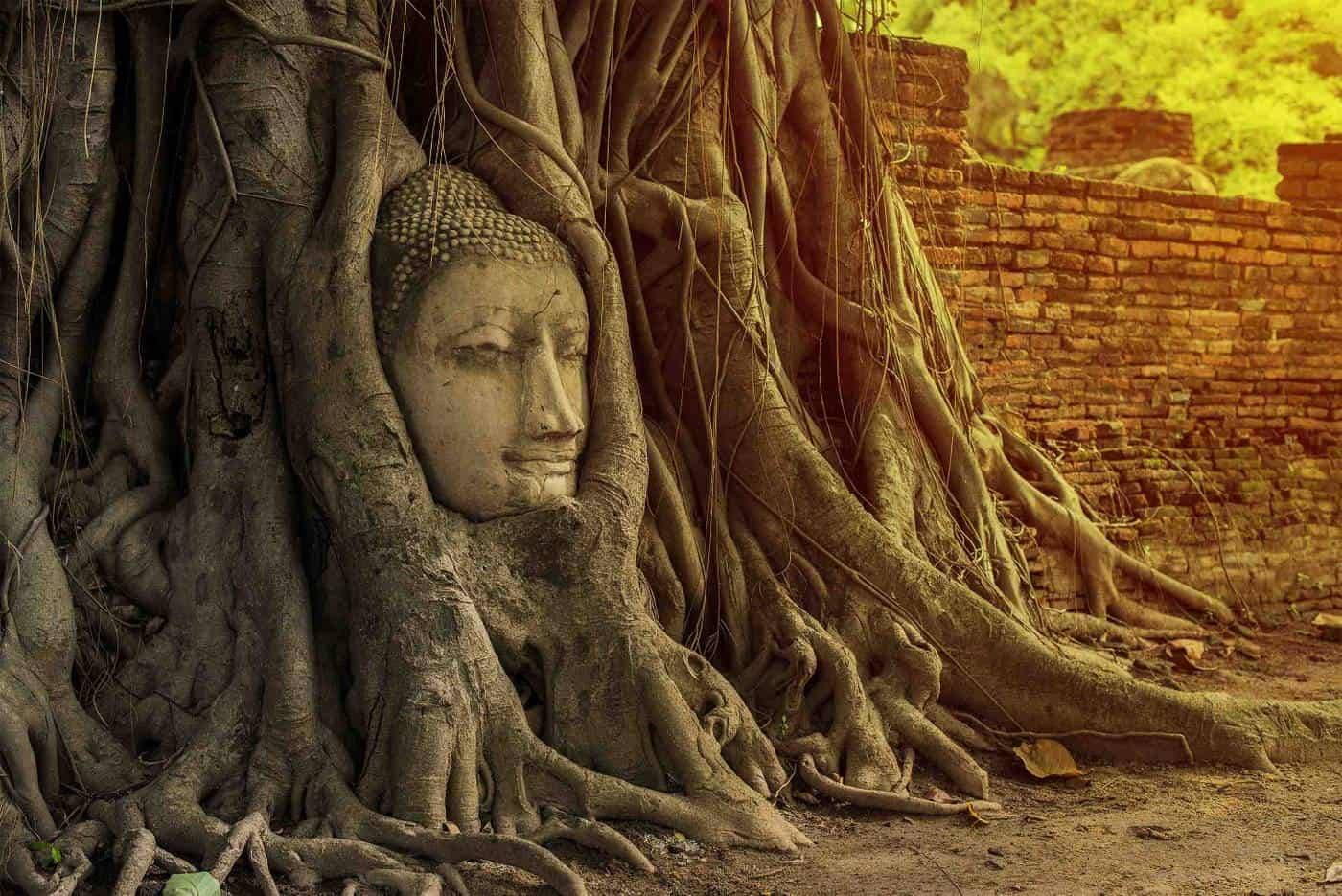
TOP EXPERIENCES IN WEST FLORES
LABUAN BAJO
Once a placid fishing village, Labuan Bajo grew up into a tourism hub and the starting point to most of the attractions of Flores. This is the place where to plan and organize your tour around Flores.
Except for its importance of having an airport and being the gateway to the Komodo National Park, where you can meet the legendary Komodo Dragon, Labuan Bajo is the base for all trips to the central highlands. Here, a good camera is more than essential for images you will be exposed to cannot be seen anywhere else on earth!
RUTENG (MAGGARAI CULTURE)
Once you have researched the Labuan Bajo, the next adventure leads to Ruteng. This is an animist domain and the local tribesmen will be more than happy tell you more about their unique culture and explain why are the rice fields so important to the indigenous people.
The round-shaped design is even maintained when distributing the so-called ‘lingko” rice fields. Such uniquely made “spider webs” are quite a spectacle and can be seen at Golo Cara.
You will need to walk up to the hills to see the archetypical Manggarai villages. Their traditional conical houses are positioned to a particular scheme, arranged in a circular sacrificial arena. Ruteng Pu’u is easily accessible from the town of Cancar and it is a gorgeous traditional village where you can see megalithic structures and watch Caci performances.
Lesser visited but the more authentic Todo, Cara and Mano village near the Ranamese Lake are also worthy.
Wae Rebo is perhaps the most picturesque of all mystic villages in Flores. The mountainous setting and well-preserved cone-shaped houses topped up with traditional performances and homestay and trekking options is an absolute must-do package for every visitor.
Liang Bua and Mata Menge are both fascinating caves and important archaeological sites near Rutang, where remains of ‘hobbits’ were found. Homo Floresiensis, so-called Hobbit, was found here in 2003. This dwarfed human individual was only 1.1 m tall and might have lived in Flores more than 700,000 years ago.
CACI WHIP FIGHT/DANCE
Caci whip fight dance is a must-see; a traditional dance-like looking fights are held regularly in the Manggarai Regency, when tribesmen from neighbouring villages gather up to compete against each other.
Using a whip and a wooden shield, the fighters’ aim is to hit the opposer. Whoever gets hit first and ends up with a red mark on the face lost. The performers only wear trousers, their upper body is naked and face unprotected – to make the ‘dance’ more painful.
The Caci performances usually last for 2-3 days throughout the Rutang region, and they are accompanied by traditional music and feast.
TRAVEL TIP
Melo Village (near Labuan Bajo) is the most accessible place where foreigners are welcome to join the locals watching the spectacle. albeit not the most authentic. The ancient villages of Wae Rebo and Ruteng Pu`u regularly held such fights in the dry season, also (Jun-Sept). For exact dates, check with your guesthouse or hotel.
BAJAWA (NGADA CULTURE)
A long and bumpy road trip from Ruteng to Bajawa is an attraction itself. Set amidst dramatic landscapes of hot springs and volcanic slopes, Bajawa is rightfully the most visited tourist spot in the western highlands of Flores.
Ngada district is the spiritual heartland of Flores famous for ancient, megalithic stones and totemic structures and strange occult rituals. Here, dog meat cooked in its own blood, moke liquor is drunk, strange rituals are performed and this is a region where black magic and sorcery are, still today, household names.
Bena and Luba are the prettiest of all Ngada villages. With ancestral shrines and impressive megalithic stones, houses decorated with pig jaws and water buffalo horns, traditional celebrations and hand-made ikat, there is much to take photographs of – so be prepared! Besides, from the nearby hill, you can enjoy a beautiful scenery, Mount Inerie and the Savu Sea coast in the background.
For walking and trekking go to the villages of Tololela and Gurusina, or Malanage hot springs and the less-touristed Wavo Muda Lakes.
Gunung Inerie (2245 m), that looms over Bajawa, can be climbed via a guided expedition within about 3 hours but it is a tough one!
RIUNG (17 ISLANDS NATIONAL PARK)
Sitting on the northern coast of Flores, Riung is the antipode of Bajawa. The coastal area is renowned for some of the most stunning snorkelling and diving locations in Nusa Tenggara.
Pulau Tujuh Belas, known as the ’17 Islands National Park’, can be reached in about 4 hours by a shuttle bus from Bajawa. Riung town has good, accommodation and facilities, and boat tours to the marine park can be arranged at any guesthouse.
Pulau Ontoloe features mangroves, Pulau Bukit Tiga & Mborong have best swimming and snorkelling, while Pulau Kalong is known for a large colony of “flying foxes”, huge bats that can be seen flying away in thousands at dusk.
ESSENTIAL EXPERIENCES IN WEST FLORES (BRIEF SUMMARY)
LABUAN BAJO – spend a few days in the capital city to plan and organize your trip
KOMODO NATIONAL PARK – take a boat tour to the Rinca, Komodo and the insta-famous Padar Island and meet the Komodo Dragon
OFFSHORE ISLANDS – take a boat from Labuan Bajo to the secluded islands of Seraya, Kanawa, and Bidadari (swimming, snorkelling and scuba diving available)
CUNCA WULANG CANYON – the best-kept secret of Labuan Bajo. 1-hour long jungle trek leads to a staggering canyon and waterfall. Seeing the waterfall cascading into the emerald waters of a narrow gorge is a real spectacle. But that is not all. Visitors have a chance to join the waterfall – it only takes a jump off the 7 or 12-metre high cliff!
CACI PERFORMANCE – watch the impressive Caci whip fight and traditional tribesmen dance
MATA MENGE & LIANG BUA HOBBIT CAVES – not far from Rutang, is an archaeological site of Mata Menge with a word’s significance. The remains of Homo Floresiensis Hobbit were found here in 2003. This dwarfed human individual was only 1.1 m tall and might have lived in Flores more than 700,000 years ago, Liang Bua is another popular cave to inspect
COLO CARA SPIDER WEB RICE FIELDS – visit the Golo Cara village, near Cancar and find the Spider-web rice fields. Learn why the rice paddies are designed in this particular way
MANGGARAI VILLAGES – search around the ancient villages of Wae Rebo and Pu`u, enjoy the views of the Ruteng region and learn about the traditional way of life.. (If you have some spare time stop by at Todo, Cara and Mano villages)
BENA & LUBA – pop into the prettiest of all Bajawa villages, built in a nine level that is structured according to different clans. The most memorable adventure would probably be witnessing one of the regularly held festivals and ceremonies. and notice the ancient megaliths of Wogo Baru and Wogo Lama
HOT SPRINGS AND WAVO MUDA LAKES – dip into the Mangeruda hot springs and enjoy the jungle surrounds, particularly in the evening, when it gets chilly. Optionally, you can start to have a nice walk starting at the Ngoranale village to reach the red-coloured crater lakes of Wawo Muda (2-3 hrs). Malange Hot Springs is a nice option, too
GUNUNG INERIE – climb the Gunung Inerie volcano (2245 m) to appreciate the staggering views of the Sumba Island in the far horizon. It is a one-day challenging hike starting from the altitude of about 900 m at the Watumeze village
17 ISLANDS NATIONAL PARK – travel to Riung and take a boat tour to one of the Pulau Tujuh Belas islands (fantastic snorkelling and scuba diving)
WHEN TO TRAVEL
The dry season in Flores Island runs from May till September and it is the best time to travel.
HOW TO GET THERE
Fly to Labuan Bajo.
Flights usually depart from Denpasar/Bali or Jakarta/Java. (see https://www.garuda-indonesia.com/)
Pelni ships are quite popular means of transport between the Indonesian islands, especially with the local people and independent travellers. (see https://www.pelni.co.id/welcome?lang=en)
NOTE There are frequent shuttle buses from Labuan Bajo to all the above-mentioned destinations (arrange in your hotel or one of the local travel agencies)
For all international flights check out www.skyscanner.com or www.momondo.com






















